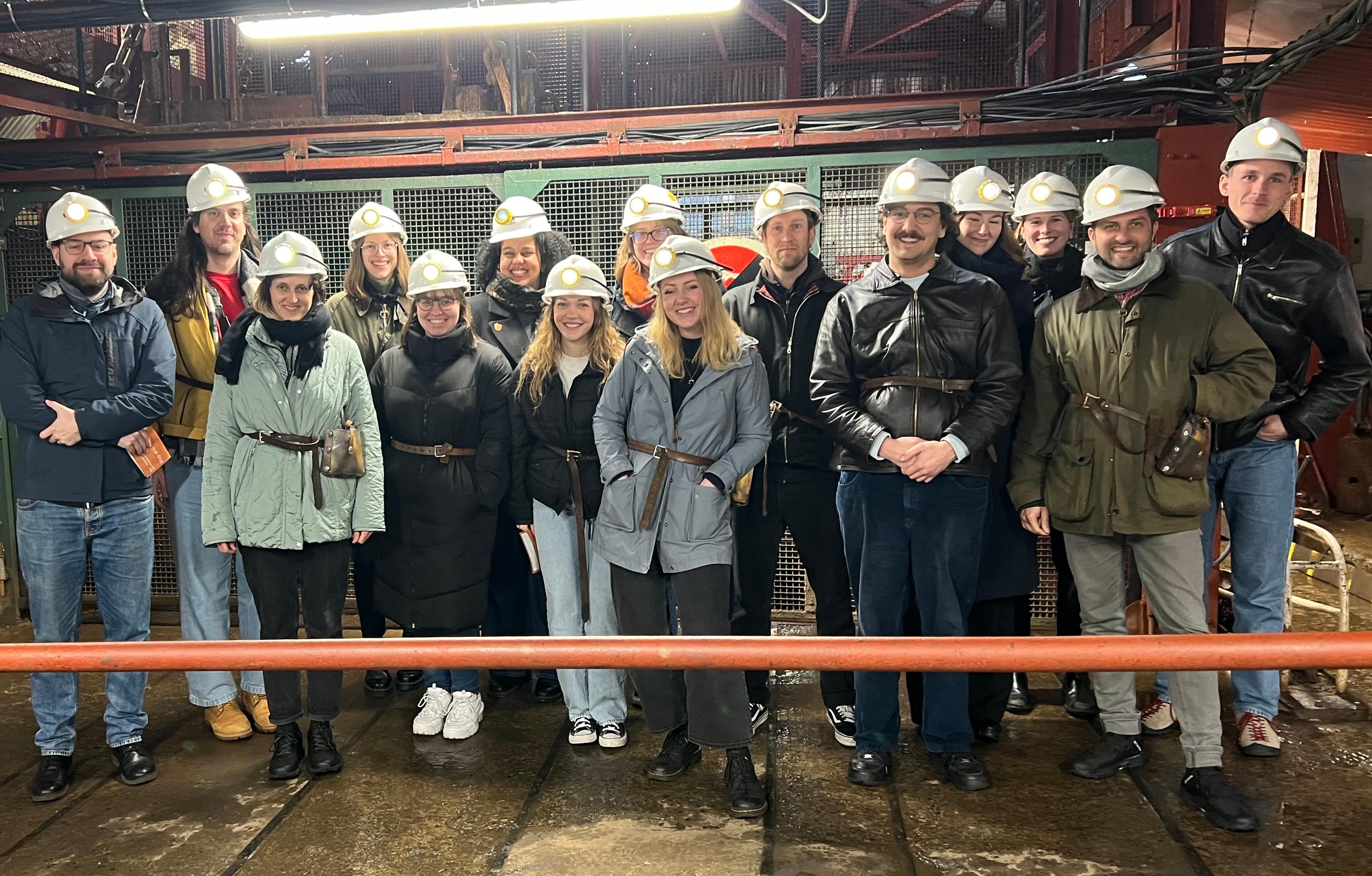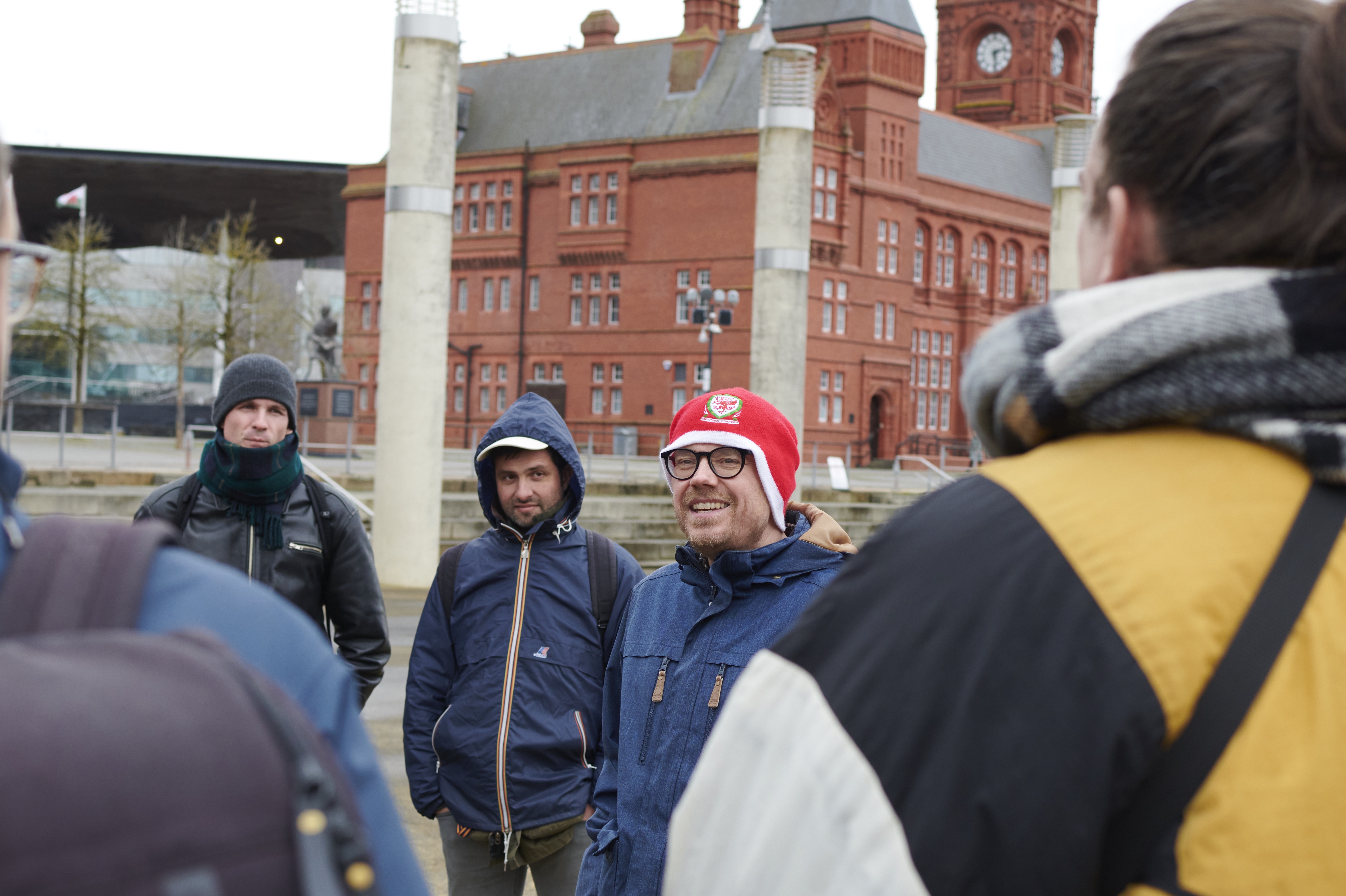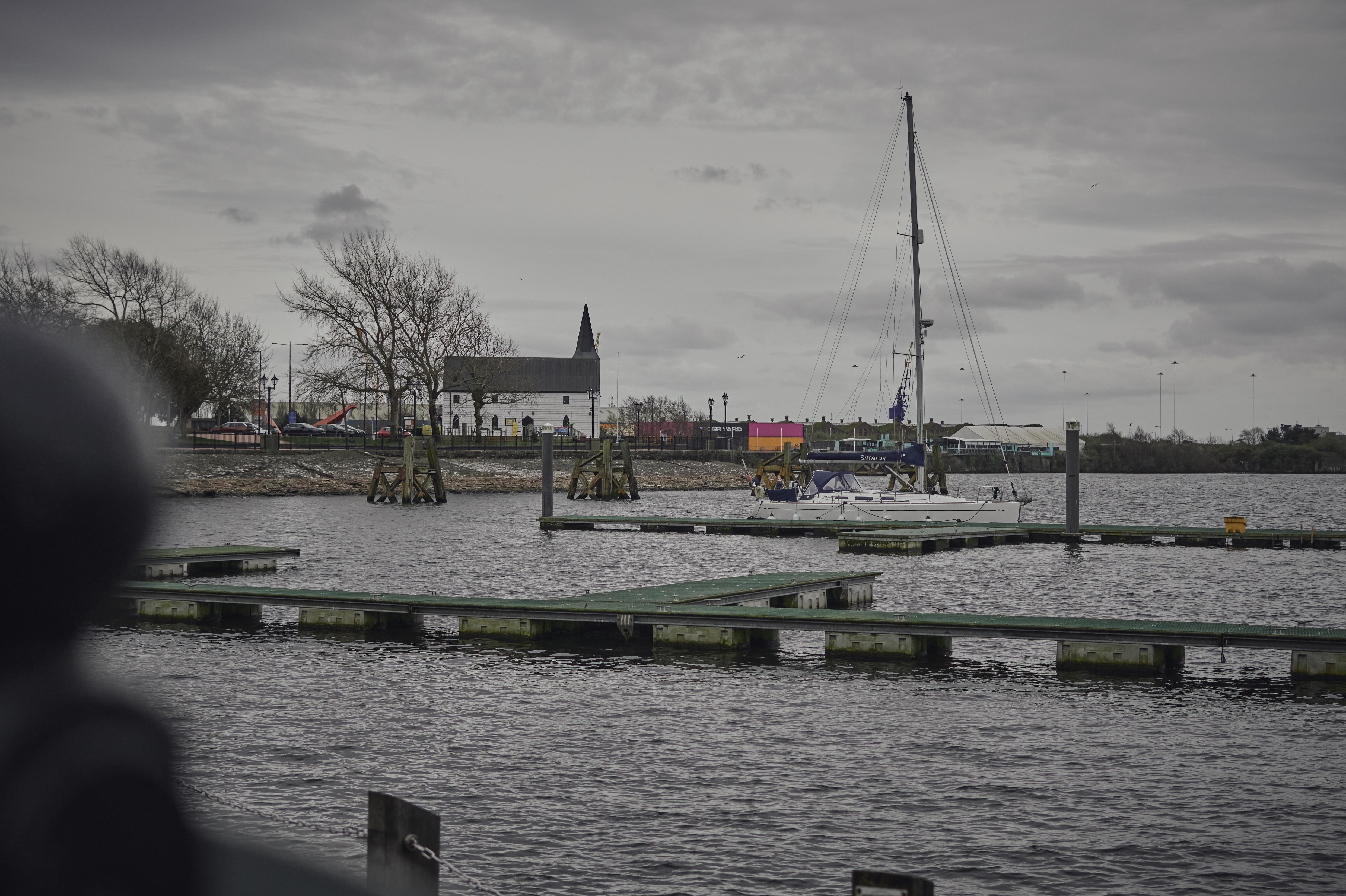Navigation auf uzh.ch
Navigation auf uzh.ch
The first day of the field trip took us underground at the Big Pit National Coal Museum, where we gained insight into the challenging conditions of coal mining. Later, a historic tour of Cardiff, led by historian Martin Johnes, introduced us to the key sites that shaped the city’s industrial past, including the Coal Exchange and Cardiff Bay, offering a glimpse into the transition from coal-driven industry to post-industrial redevelopment.

Figure 1: Fully equipped and ready for the underground tour at the Big Pit National Coal Museum. Photo by Olivia Frigo-Charles.
Coal, often referred to as "King Coal" or "Black Gold," was the cornerstone of Wales' economy for over a century. This abundant natural resource fueled the industrial revolution and shaped the socio-economic landscape of Wales. Today, the environmental impact of burning fossil fuels such as coal is discussed much more critically by many: Burning it for its energy continues to damage the atmosphere. At the same time, understanding the impact of extractivist industrialism in the “capitalocene” also requires us to see that this form of production shaped entire socio-cultural worlds and created long-lasting attachments. Coal mining in South Wales was more than just an industry; it was a way of life that defined communities, forged identities, and sustained livelihoods. The wealth generated from coal mining contributed significantly to the (relative) post-War prosperity of Wales, supporting not only local economies but also feeding the industrial appetite of imperial Britain and beyond.
Our field trip to Wales began with an exploration of coal's journey from its extraction in the Welsh valleys to its transportation and eventual trade and shipment around the globe from Cardiff Harbour. On the first day, we delved into the history and impact of the coal industry with an underground tour at the Big Pit National Coal Museum (see also the article by Melissa Fricke). This was followed by a historic tour of Cardiff, guided by Martin Johnes of Swansea University, who provided us with a comprehensive understanding of coal’s role in shaping both the local and national landscapes.

The Big Pit National Coal Museum in Blaenavon offers a stark glimpse into the world of coal mining – and is an immersive experience. As we descended underground in a cage (“don’t call it an elevator!”), we were invited to imagine the harsh and perilous conditions that miners faced daily: A cramped, dark, and dangerous environment where men, and often boys, worked long hours extracting coal. Before the Mines and Collieries Bill in 1842, women and girls as well as boys under 10 years old worked there as well.
In the dimly lit tunnels, it seemed easy to imagine the miners labouring tirelessly, their only source of light coming from the lamps they carried. The physical demands and hazards of the job were palpable, from the low ceilings that forced us to stoop, to the narrow passageways that seemed to close in around us. The air must have been thick with the dust and grime that miners would have breathed in, and a constant reminder of the ever-present danger they faced from explosions, collapses, and long-term health issues like black lung disease.
As the professional guides – the older ones being former miners – explained, that the camaraderie among miners was more than just a byproduct of their shared labour; it was a vital aspect of their survival. This dangerous form of employment required an extraordinary level of trust. Each miner depended on the others to perform their tasks precisely, knowing that any mistake could have fatal consequences. This bond between men fostered a strong sense of community and identity among the miners, which extended beyond the mine and into the villages and towns built around these industrial hubs.

Our next stop on the field trip took us to Cardiff where we received a tour by historian Martin Johnes from Swansea University. Here, we visited the Coal Exchange, a historic symbol of the coal industry's heyday and the transformations that have since taken place. Constructed between 1884 and 1888, this grand building was originally established to trade the coal that was extracted in the hundreds of small mines of the South Wales Valleys, with most coal shipped from Cardiff for distribution. During its peak, the trading hall was a bustling hub where coal owners, ship owners, buyers and their agents met to negotiate deals. At midday, the hall was filled with up to 200 men making handshake deals or by telephone, with an estimated 10,000 people passing through the building each day. It was here that the world's coal prices were determined, and in 1904, the first-ever £1,000,000 deal was made. The contrast between the sites of extraction and this site of trade couldn’t have been starker.
Following a lavish refurbishment in 1912 and an extension in 1915, the Coal Exchange continued to thrive until Cardiff's reliance on coal left the Bute Docks vulnerable to declining demand. After World War II, the docks fell into further decline, leading to the closure of the Coal Exchange in 1958 and the end of coal exports by 1964. Despite being earmarked for various uses, including as a potential home for the Welsh Assembly and headquarters for the Welsh language television station S4C, these plans never materialised.
After being used as a major venue for concerts the Coal Exchange in Cardiff faced closure in 2013 due to safety issues. Efforts to preserve and repurpose the building included plans for a hotel with a museum, but the project's future became uncertain during the COVID-19 pandemic. Cardiff-based Eden Grove Properties “saved” the Coal Exchange in 2020, with ongoing efforts to restore and complete the hotel by early 2022.
Today, much of the building serves as a hotel, reflecting the broader narrative of industrial decline and the enduring impact of deindustrialisation on Welsh heritage. Some parts of the building are still in obvious disrepair. From a bustling marketplace to a symbol of historical significance, the building embodies the transformation of Cardiff's industrial landscape.
.jpg)
Getting off the minibus in Cardiff Bay, we found ourselves in front of the Senedd building, the Welsh Parliament, that was opened in 2006. The area epitomises what well-funded postindustrial development of the 1990s and 2000s from the New Labour era – and the aesthetic time of postmodernism – looked like. The Senedd, the Wales Millennium Center (a huge concert and performance venue), a shopping center, office buildings, a few historic remnants such as the red-brick Pierhead Building, a site for large public events and fairs, the waterside promenade – and, like in many similar spaces, at least at this time of year, few pedestrians and people overall.
Cardiff Harbour was once the primary export hub for Welsh coal. The bustling docks were the gateway through which coal traveled from the Welsh valleys to the rest of the world. At its peak, Cardiff was one of the busiest ports globally, with coal shipments reaching markets across Europe, the Americas, and beyond. This global distribution network underscored the strategic importance of Welsh coal and highlighted Cardiff's status as a critical node in international trade.

Walking into the city center, we passed an area known as Tiger Bay – now largely made up of new-ish low-income housing. As Martin Johnes explains, Tiger Bay played a crucial role in the city’s development as a major port. Known for its vibrant and diverse community, Tiger Bay as a residential area was home to sailors, dockworkers, and immigrants from around the world. The name "Tiger Bay" reflects a certain exoticism from earlier times and evokes a sense of adventure and danger. This area attracted a diverse population, including sailors, traders, and workers from the Caribbean, Africa, the Middle East, and Europe, creating a rich cultural tapestry. It was home to one of the first Black communities in Europe. As Johnes explained, the history of the area must also be told as a history of sometimes violent racial inequality. In public representations, the success of individual community members is highlighted more strongly: A mural presents Shirley Bassey, the singer, as the most prominent person from the neighborhood.
.jpg)
The decline of the coal industry in the mid-20th century led to a reduction in shipping activity in Cardiff. Today, Tiger Bay and its surroundings have undergone substantial redevelopment and are now known as Cardiff Bay.
This redevelopment has not been without controversy. The water in Cardiff Bay was once notorious for its stench due to tidal movements, which deterred tourism. To combat this, the Cardiff Bay Barrage was constructed in the 1990s, creating a permanent body of freshwater. While this improved conditions for tourism and recreational activities such as watersports, it also had significant environmental consequences. The barrage destroyed the natural habitat of many species, particularly those that relied on tidal patterns.
The decline of the coal industry in Wales is often closely associated with the policies of Margaret Thatcher's government in the 1980s. Her approach to economic reform, which included the closure of unprofitable coal mines, the weakening or destruction of labour unions, and of the industrial sector in general, led to widespread unemployment and social unrest. In Wales, these closures were particularly devastating, as entire communities had been built around the mining industry. The scars of these policies are still felt today, with many Welsh people harbouring resentment towards Thatcher for what they perceive as the destruction of their livelihoods and communities. This period marked the end of an era, signaling not only the decline of coal mining but also a profound identity crisis for the regions that had depended on it for generations.
Thatcher's legacy in Wales is one of economic disruption and social upheaval. This profound change is reflected in the ongoing restoration and repurposing of historical sites like the Big Pit, the Coal Exchange, and Cardiff Bay, as the region strives to find a new sense of identity and purpose in the post-industrial age.
The enduring resentment towards Thatcher's policies underscores the deep and lasting impact of these economic reforms on the fabric of Welsh society. This sentiment is evident even in current narratives about further deindustrialisation, such as the looming closures at Tata Steel. Many draw direct links between these modern challenges and the historical undermining of unions during the miners’ strike, reflecting a continued struggle with the legacy of Thatcher’s economic strategies.

Moritz Ege & Olivia Frigo-Charles